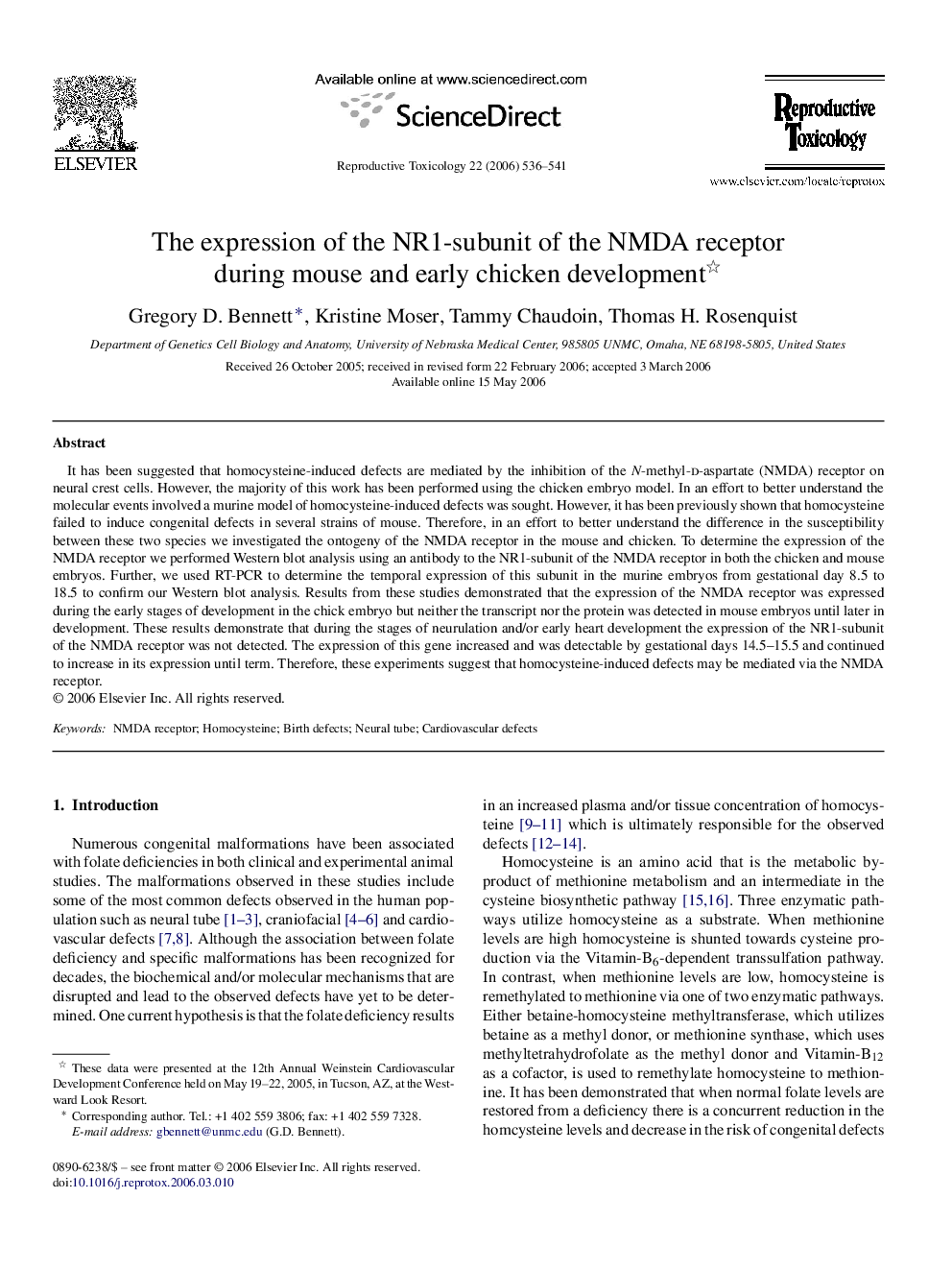| Article ID | Journal | Published Year | Pages | File Type |
|---|---|---|---|---|
| 2595083 | Reproductive Toxicology | 2006 | 6 Pages |
It has been suggested that homocysteine-induced defects are mediated by the inhibition of the N-methyl-d-aspartate (NMDA) receptor on neural crest cells. However, the majority of this work has been performed using the chicken embryo model. In an effort to better understand the molecular events involved a murine model of homocysteine-induced defects was sought. However, it has been previously shown that homocysteine failed to induce congenital defects in several strains of mouse. Therefore, in an effort to better understand the difference in the susceptibility between these two species we investigated the ontogeny of the NMDA receptor in the mouse and chicken. To determine the expression of the NMDA receptor we performed Western blot analysis using an antibody to the NR1-subunit of the NMDA receptor in both the chicken and mouse embryos. Further, we used RT-PCR to determine the temporal expression of this subunit in the murine embryos from gestational day 8.5 to 18.5 to confirm our Western blot analysis. Results from these studies demonstrated that the expression of the NMDA receptor was expressed during the early stages of development in the chick embryo but neither the transcript nor the protein was detected in mouse embryos until later in development. These results demonstrate that during the stages of neurulation and/or early heart development the expression of the NR1-subunit of the NMDA receptor was not detected. The expression of this gene increased and was detectable by gestational days 14.5–15.5 and continued to increase in its expression until term. Therefore, these experiments suggest that homocysteine-induced defects may be mediated via the NMDA receptor.
